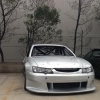Dry Sumps And You.......
Announcements
-
Similar Content
-
Latest Posts
-
By soviet_merlin · Posted
Yeah, I was going to ask them if they are a real person. I'm expecting nothing for a while and then a sneaky casino link in a quote somewhere. I mean for a bot this is a lot more suited to the forums than the young lady looking for male company the other day. But then, maybe it is not -
By joshuaho96 · Posted
Do these support ABS tone rings? I feel like I recall either these or Brypar's uprights don't support ABS. -
Only lightly. I did write a passive aggressive reply complaining about Tesla drivers to see what response I'd get, then thought I'd be a little more mature than that. We'll see what happens. Spambots aren't very clever if they're going to do posts like this and then not follow up on pertinent advice/questions.
-






Recommended Posts
Create an account or sign in to comment
You need to be a member in order to leave a comment
Create an account
Sign up for a new account in our community. It's easy!
Register a new accountSign in
Already have an account? Sign in here.
Sign In Now